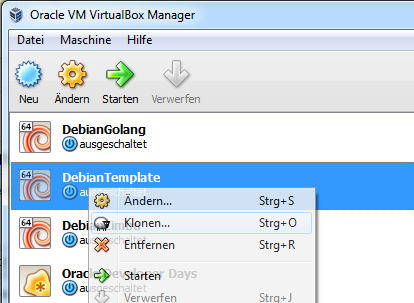If you’re a *unix admin you probably like SSH a lot. Even if you have to work on a Windows computer you can simply download a small tool like Putty and you’re ready to work on your server. However, there are situations where not even Putty works – if you’re behind a firewall that filters the outgoing traffic as well. It usually makes sense to block outgoing SSH traffic in a big company because you could easily create an encrypted tunnel to move secret data to any server you want.
But there’s another way to access your server using SSH like tools without having to worry about encrypted tunnels or any other threats SSH could cause. It’s called shellinabox and can be found on Google Code.
If you’re working with debian like I do, you can even download a prebuilt deb file.
wget http://shellinabox.googlecode.com/files/shellinabox_2.10-1_i386.deb
dpkg -i shellinabox_2.10-1_i386.deb
The installer creates an init script located in /etc/init.d/shellinabox. As soon as it has been started you can access your shell using any webbrowser using an address like this: https://localhost:4200. But the port 4200 is usually not accessible if you’re working behind a firewall that blocks SSH traffic. Let’s use apache to redirect traffic from HTTPS to 4200. We have to enable mod_proxy if it’s not already active:
/etc/apache2/mods-enabled
ln -s ../mods-available/proxy.conf
ln -s ../mods-available/proxy.load
ln -s ../mods-available/proxy_http.load
Edit the site file where you want to add your shell, I used /etc/apache2/sites-available/default-ssl and added these lines:
<Location /shell>
ProxyPass http://localhost:4200/
Order allow,deny
Allow from all
</Location>
Shellinabox uses https by default as well and is accessible by any ip address. We want to change that, let’s edit this file /etc/init.d/shellinabox and add SHELLINABOX_ARGS (the last line in the following box):
# Set some default values
SHELLINABOX_DATADIR="${SHELLINABOX_DATADIR:-/var/lib/shellinabox}"
SHELLINABOX_PORT="${SHELLINABOX_PORT:-4200}"
SHELLINABOX_USER="${SHELLINABOX_USER:-shellinabox}"
SHELLINABOX_GROUP="${SHELLINABOX_GROUP:-shellinabox}"
SHELLINABOX_ARGS="--localhost-only --disable-ssl"
If you now restart all the services “/etc/init.d/shellinabox restart” and /etc/init.d/apache2 restart”, you’re shell can be accessed by https://localhost/shell from anywhere you want!

